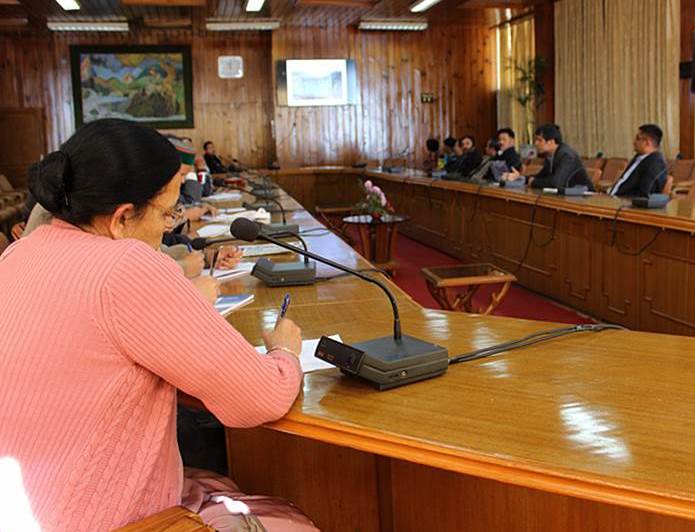In a half day program organised today in Shimla by environmental groups Himdhara Collective and LIFE (Legal Initiative for Environment and Forests, environmentalists including lawyers, activists and concerned citizens of Shimla deliberated on the role of the National Green Tribunal in the context of Himachal’s environment issues.
Supreme Court Lawyer Rahul Chaudhary and High Court Lawyer Sanjeet Purohit made a presentation on history and workings of the National Green tribunal, a statutory judicial body established by the Parliament under the National Green Tribunal Act in 2010. “NGT is unique as it is the country’s first specialised environmental court with expert members to adjudicate on environmental issues and disputes. One of the primary objectives of the tribunal is ensuring speedy environment justice and effective disposal of cases related to environmental protection, forest conservation and other natural resources, and most importantly enforcement of legal rights related to environment”, they said.
The NGT works recognizing the three important international principles – sustainable development, Polluter pays and precautionary principle they added. They also discussed the cases from Himachal that are now on-going in the NGT – like Kashang Hydropower Project, Renuka Dam Project, Luhri Hydropower Project and Shimla Green Belt Notification case. Representatives from affected communities and the petitioners in some of these cases also attended the meeting. These included Shri S.S. Negi, Shri Durga Ram Sharma, Nek Ram Sharma, Shyam Singh Chauhan and Salig Ram ji who put forward the different issues raised by them in the NGT cases.
Subhash Mendhapurkar of SUTRA, an NGO based in Solan raised the issues of the Parwanoo Solan High and the forest diversion involved. Shrinivas Joshi, a former bureaucrat and an active citizen of Shimla raised the issues of Solid Waste dumping in non authorised areas in Shimla; the question of illegal stone crushers and the issues o dumping of solid waste in Bhariyal village without NOC from the Panchayat. Pratima Malhotra, senior advocate of the Shimla High Court, spoke of the problems with the judiciary and that while she has been active on environmental cases, has not received the kind of response because of the corruption that exists at various levels in the regulatory institutions. Rishi Bhalaik from Rampur project affected area spoke about the lack of compensation for the loss of crop fertility. Advocate Vinay Mehta also raised the issue of tunneling and muck dumping by the hydropower projects and how it is causing increasing erosion and landslides across the Satluj Valley. There was also mention on the issue of Air and water pollution by industries in Himachal on which a case is on-going in the NGT. The meeting brought forth the possibilities of engaging with the NGT for compensation cases for the communities affected by environmental issues.
In a state like Himachal Pradesh, where hydropower, mining, tourism projects and industrial development have become the central agenda of the economic policy, the fragile ecology and livelihoods dependent on natural resources have been at stake. With increasing climatic changes, the stress on the Himalayan region is even more severe. However, in Himachal, judicial activism in environment litigation has played an important role in many a landmark cases, especially related to pollution of rivers, deforestation and urban sprawl.
“We were keen to open up the understanding about the scope and limitations of the NGT and how it can be an avenue for environmental justice for people concerned with environment in Himachal Pradesh” Added members of Himdhara Environment Collective.






